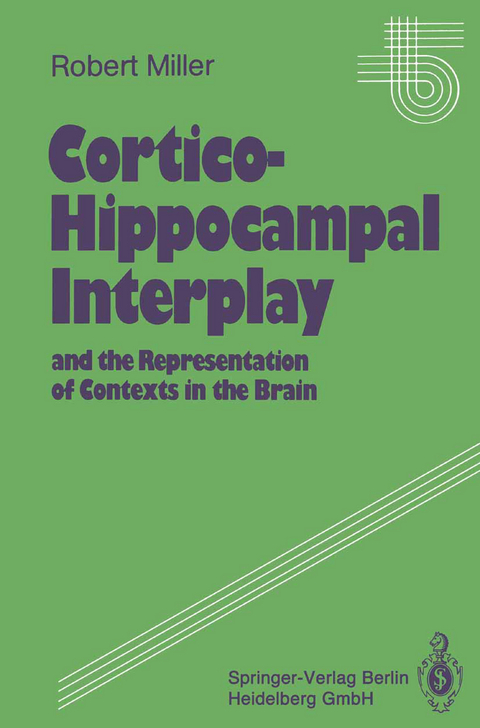
Cortico-Hippocampal Interplay and the Representation of Contexts in the Brain
Springer Berlin (Verlag)
978-3-662-21734-4 (ISBN)
How does the brain process information? This study discusses the limitations of currently-envisaged schemes of representation in the brain, and proposes a new, more powerful theory.
1 Statement of the Problem.- 1 Historical Introduction.- 2 Designs for a Prototype Cerebral Cortex.- 2 Reviews Of The Experimental Evidence Relevant To The Formulation Of The Theory Of Cortico-Hippocampal Interaction.- 3 Anatomy of the Hippocampal Complex and Related Regions.- 4 Discovery and General Behavioural Correlates of the Hippocampal Theta Rhythm.- 5 The Septum as a Pacemaker for the Hippocampal Theta Rhythm.- 6 Subdivision of Theta Types According to Sources of Extra-Hippocampal Control.- 7 Evidence for Multiple Sources of Theta Generation in the Hippocampus and Related Structures.- 8 Towards a Neuronal Model to Account for the Laminar Waveforms of Theta Activity.- 3 The Theory of Resonant, Self-Organizing Phase-Locked Loops.- 9 Cortico-Hippocampal Interaction: Theory, Implications and Predictions.- 10 Theta Activity and Learning.- 11 Synopsis and Epilogue.- References.
| Erscheint lt. Verlag | 20.11.2013 |
|---|---|
| Reihe/Serie | Studies of Brain Function |
| Zusatzinfo | XV, 269 p. 62 illus. |
| Verlagsort | Berlin |
| Sprache | englisch |
| Maße | 155 x 235 mm |
| Gewicht | 440 g |
| Themenwelt | Informatik ► Weitere Themen ► Bioinformatik |
| Medizin / Pharmazie ► Studium | |
| Naturwissenschaften ► Biologie ► Humanbiologie | |
| Schlagworte | anatomy • brain • brain function • Cortex • Elektroencephalographie • Gehirnfunktion • Großhirnrinde • hippocampus • Neuroanatomy • theta rhythm • Thetarhythmus |
| ISBN-10 | 3-662-21734-1 / 3662217341 |
| ISBN-13 | 978-3-662-21734-4 / 9783662217344 |
| Zustand | Neuware |
| Haben Sie eine Frage zum Produkt? |
aus dem Bereich


